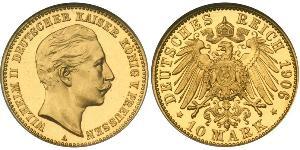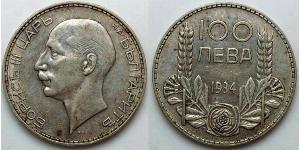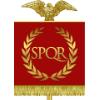3 Mark Weimar Republic (1918-1933) Silver
GERMANY, Weimar Republic, three reichsmark, Centenary of Death of Goethe (KM.76).
74
coins in the group
View all coins in the group
View all coins in the group
(740 X 370pixels, file size: ~50K)
Posted by: anonymous 2020-07-05
1932,3 Mark 1932 A. Goethe. Jaeger 350. Vorzüglich - Stempelglanz.
(740 X 368pixels, file size: ~61K)
Posted by: anonymous 2020-11-08
1932,3 Mark 1932 A. Goethe. Jaeger 350. Vorzüglich.
(740 X 367pixels, file size: ~41K)
Posted by: anonymous 2020-07-04
1932,3 Mark 1932 D. Goethe. Jaeger 350. Vorzüglich - Stempelglanz.
(1500 X 750pixels, file size: ~183K)
Posted by: anonymous 2019-03-24
3 Mark 1932 A. Goethe. Jaeger 350. Vorzüglich
(1537 X 748pixels, file size: ~170K)
Posted by: anonymous 2018-12-02
1932, Germany (Weimar Republic). Silver "Goethe" 3 Mark Coin. NGC MS-63! Mint Year: 1932 Reference: KM-76. Mint Place: Muldenhutten (E) Condition: Certified and graded by NGC as MS-63! Denomination: 3 Mark - 100 Years of the Death of Johann Wolfgang von Goethe Diameter: 30mm Material: ...
(1537 X 738pixels, file size: ~145K)
Posted by: anonymous 2018-10-24
1932, Germany (Weimar Republic). Proof-Like Silver "Goethe" 3 Mark Coin. GENI UNC- Mint Date: 1932 Reference: KM-76. Mint Place: Karlsruhe (G) Denomination: 3 Mark - 100 Years of the Death of Johann Wolfgang von Goethe Condition: Certified and slabbed by GENI (a French third-party certify ...
Articles
|
You may be interested in following coins
2024-04-26
- New coin is added to 500 Reis Kingdom of Portugal (1139-1910) Silver Peter V of P ...
500 Reis Kingdom of Portugal (1139-1910) Silver Peter V of P ...
group has 2 coins / 2 prices
⇑
1856, Portugal, Pedro V. Nice Silver 500 Reis Coin. VF
Mint Year: 1856 Reference: KM-494. Denominations: 500 Reis Condition: Scattered contact marks and minor rim hits, otherwise V ...
2024-04-26
- New coin is added to 100 Lev Bulgaria Silver
100 Lev Bulgaria Silver
group has 16 coins / 12 prices
⇑
BULGARIA 100 Leva 1937 - Silver .500 - XF+ - 2039 PB
You may be interested in ...

-500-250-B14Kbzbi78YAAAFLAqnk0Lcg.jpg)
-300-150-EQ3cL1dgNqIAAAFzIpvDuSDi.jpg)
-300-150-ksJEqa_rezoAAAF199o9Vaog.jpg)
-300-150-xercL1dg7mIAAAFzfCHDuRu_.jpg)
-300-150-YZXZGYbc48kAAAFpJSiZt65w.jpg)
-300-150-bBq8ZsvETjAAAAFn33vuVG2B.jpg)
-300-150-s_XZC4KO9xkAAAFmedmYvqSp.jpg)






-300-150-GbIdI28DtMIAAAF9jiID5Ziq.jpg)








